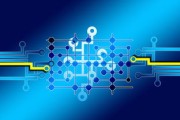物联网大数据分析
Title: Crafting Effective Big Data Solutions for the Internet of Things (IoT)
In the dynamic landscape of the Internet of Things (IoT), where interconnected devices generate vast amounts of data, crafting robust big data solutions is crucial for unlocking the full potential of IoT deployments. This article delves into key considerations and strategies for designing and implementing effective big data solutions tailored to the IoT ecosystem.
Understanding the IoT Data Landscape
IoT ecosystems are characterized by a myriad of interconnected devices, sensors, and actuators that continuously generate diverse data types at varying velocities and volumes. This data deluge encompasses structured, semistructured, and unstructured data, ranging from sensor readings and telemetry data to multimedia content and user interactions.
Challenges and Opportunities
1. Data Volume and Velocity:
Challenge:
Managing the sheer volume and velocity of data generated by IoT devices.
Opportunity:
Leveraging scalable storage and processing frameworks capable of handling realtime streaming data.2. Data Variety:
Challenge:
Dealing with diverse data formats and schemas from heterogeneous IoT devices.
Opportunity:
Employing flexible data models and schemaonread approaches to accommodate varied data structures.3. Data Veracity and Quality:
Challenge:
Ensuring the reliability, accuracy, and consistency of IoT data, which may be prone to noise and errors.
Opportunity:
Implementing data validation, cleansing, and anomaly detection techniques to enhance data quality.4. Data Security and Privacy:
Challenge:
Safeguarding sensitive IoT data against security breaches and privacy violations.
Opportunity:
Employing robust encryption, access controls, and authentication mechanisms to protect data confidentiality and integrity.Components of an Effective Big Data Solution for IoT
1. Data Acquisition and Ingestion:
Implement data ingestion pipelines capable of efficiently collecting, aggregating, and ingesting data from diverse IoT sources in realtime.
Utilize lightweight protocols (e.g., MQTT, CoAP) for efficient communication between IoT devices and data ingestion systems.
2. Stream Processing and Analytics:
Deploy stream processing frameworks (e.g., Apache Kafka, Apache Flink) for realtime processing and analysis of streaming IoT data.
Apply complex event processing (CEP) techniques to identify patterns, detect anomalies, and trigger automated responses in realtime.
3. Storage and Data Management:
Utilize distributed storage systems (e.g., Hadoop HDFS, Apache Cassandra) to store and manage large volumes of IoT data.
Employ NoSQL databases for flexible schema design and horizontal scalability to accommodate evolving IoT data requirements.
4. Data Governance and Compliance:
Establish data governance policies and procedures to ensure regulatory compliance and adherence to data privacy regulations (e.g., GDPR, CCPA).
Implement data lineage tracking and audit trails to maintain data provenance and traceability across the IoT data lifecycle.
5. Machine Learning and Predictive Analytics:
Integrate machine learning models and algorithms to derive actionable insights, predict future trends, and enable proactive decisionmaking in IoT applications.
Leverage edge computing capabilities to deploy lightweight machine learning models directly on IoT devices for realtime inference and anomaly detection.
Best Practices and Recommendations
1.
Scalability and Elasticity:
Design big data solutions with horizontal scalability and elasticity to accommodate growing IoT deployments and fluctuating workloads.2.
Interoperability and Standards:
Embrace open standards and interoperable protocols to foster seamless integration and interoperability across heterogeneous IoT devices and platforms.3.
Data Lifecycle Management:
Implement comprehensive data lifecycle management strategies to govern data from ingestion to archival, ensuring efficient utilization of storage resources and compliance with data retention policies.4.
Continuous Monitoring and Optimization:
Establish proactive monitoring and performance optimization practices to identify bottlenecks, optimize resource utilization, and ensure the reliability and responsiveness of IoT big data pipelines.
5.
Collaboration and Knowledge Sharing:
Foster crossfunctional collaboration and knowledge sharing among data engineers, domain experts, and IoT stakeholders to leverage domainspecific insights and expertise in designing tailored big data solutions for IoT use cases.Conclusion
Crafting effective big data solutions for the Internet of Things requires a holistic approach encompassing data acquisition, processing, storage, and analytics, along with robust governance, security, and scalability considerations. By embracing best practices and leveraging emerging technologies, organizations can harness the full potential of IoT data to drive innovation, optimize operations, and deliver enhanced experiences for users and stakeholders in diverse domains.
标签: 物联网大数据分析 物联网大数据有哪些特征 物联网的大数据方案是什么 物联网大数据处理技术 物联网的大数据方案怎么写
相关文章
-
景顺成长,探索中国城市化进程中的绿色发展之路详细阅读

在21世纪的今天,城市化已成为全球范围内不可逆转的趋势,中国,作为世界上人口最多的国家,其城市化进程尤为引人注目,随着经济的快速发展,城市化带来的问题...
2025-10-01 199
-
深度解析,股票000777中核科技的投资价值与未来展望详细阅读

在当今的投资市场中,股票投资无疑是一个热门话题,而在众多股票中,股票代码为000777的中核科技因其独特的行业地位和发展潜力,吸引了众多投资者的目光,...
2025-09-30 241
-
深圳证券交易所交易规则,投资市场的指南针详细阅读

亲爱的读者,想象一下,你正站在一个繁忙的十字路口,四周是熙熙攘攘的人群和川流不息的车辆,每个人都在按照交通规则行事,红灯停,绿灯行,黄灯亮起时,大家会...
2025-09-30 201
-
基金202005,揭秘投资背后的逻辑与策略详细阅读

在投资的世界里,基金是一种备受瞩目的投资工具,它以其多样化的投资组合、专业的管理团队和相对稳定的收益吸引了众多投资者的目光,我们将深入探讨基金2020...
2025-09-30 194
-
探索中国平安行销,策略、实践与未来趋势详细阅读

在当今竞争激烈的市场环境中,行销策略对于企业的成功至关重要,中国平安,作为中国领先的金融服务集团,其行销策略不仅在国内市场上取得了显著成效,也为全球行...
2025-09-29 201
-
深入解析数码视讯股票,投资价值与市场前景详细阅读

在当今数字化时代,数码视讯行业作为信息技术领域的重要组成部分,正逐渐成为投资者关注的焦点,本文将深入探讨数码视讯股票的投资价值与市场前景,帮助投资者更...
2025-09-29 242
-
悦康药业,创新与责任并重,引领健康未来详细阅读

在当今这个快节奏、高压力的社会中,健康成为了人们越来越关注的话题,而在医药行业中,有这样一家企业,它以创新为驱动,以责任为担当,致力于提供高质量的药品...
2025-09-29 192
-
深度解析,定向增发股票背后的资本游戏与投资策略详细阅读

在资本市场的棋盘上,股票的每一次变动都牵动着投资者的神经,定向增发作为一种特殊的融资方式,因其能够为上市公司带来资金的同时,也为投资者提供了新的投资机...
2025-09-29 196
